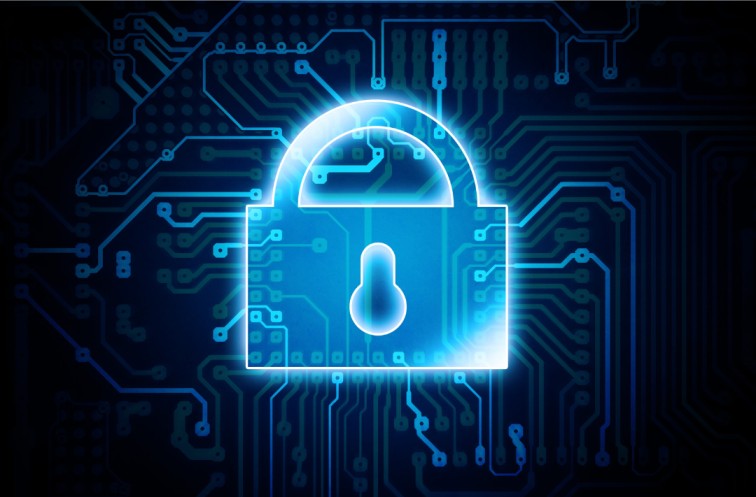
The Internet of Things (IoT) represents a network of physical objects embedded with sensors, software, and other technologies aimed at connecting and exchanging data with other devices and systems over the internet. These objects range from ordinary household items to sophisticated industrial tools. As the number of connected devices continues to surge, the data they generate offers revolutionary insights and automation in various fields including healthcare, agriculture, and manufacturing.
However, the increased connectivity and data exchange also present significant security challenges. The implications of a compromised IoT device can be far-reaching, from breaches of personal privacy to substantial risks to critical infrastructure. Ensuring the security of these devices is of paramount importance, as their interconnected nature means that vulnerabilities in one device can potentially be exploited to affect others within the network.
IoT security involves protective measures designed to safeguard connected devices and networks in the IoT ecosystem. Your device’s security encompasses several aspects such as the physical device itself, the data it transmits, and even the software updates it receives. As you adopt IoT solutions, understanding and implementing robust IoT security protocols is crucial to protect against evolving cybersecurity threats and to maintain the integrity of the IoT infrastructure.
Principles of IoT Security

Effective IoT security hinges on understanding and implementing several core principles. These ensure the robustness and reliability of the networked devices and the data they handle.
Securing Devices and Data
When you secure IoT devices and data, you must prioritize the authentication and encryption processes. It’s important to ensure that:
- Devices authenticate across networks using secure protocols.
- Data at rest and in transit are encrypted to prevent unauthorized access.
Additionally, employ access controls to define who or what can communicate with your IoT devices. Proper configuration to restrict unnecessary data access is vital to maintain integrity.
Threat Identification
Identifying threats involves understanding the landscape of potential risks. You need to:
- Recognize typical IoT attack vectors such as device hijacking or Denial of Service (DoS) attacks.
- Monitor network traffic and log activities to detect anomalies indicative of potential threats.
Regularly updating your knowledge base with the latest security trends and threats helps you stay ahead in threat identification.
Vulnerability Management
To manage vulnerabilities:
- Conduct regular assessments to identify and prioritize vulnerabilities.
- Apply patches, updates, and security fixes promptly to minimize exposure to known risks.
Organize your approach to vulnerability management by maintaining an active inventory of your IoT devices and their current firmware status to ensure ongoing protection.
These principles serve as a framework to secure IoT applications against a landscape of evolving risks and vulnerabilities.
IoT Security Challenges

Your IoT devices are becoming essential to daily life, but with their growing prevalence come significant security challenges. Awareness of these challenges is the first step in safeguarding your devices against potential threats.
Diversity of Devices
In the IoT landscape, you encounter a vast array of devices from different manufacturers, each with its own configurations and operating standards. This diversity means that your devices may not have uniform security measures, presenting an array of vulnerabilities. Hackers often exploit these inconsistencies, making devices targets for cyber-attacks. A key risk is that one compromised device can potentially put the entire network at risk.
Complexity of Systems
Your IoT systems can be large and multi-layered, integrating various technologies and protocols. This inherent complexity can make it difficult to detect vulnerabilities and secure every aspect of the system. For you, this translates into an increased attack surface for potential exploits. Regular updates and patches are essential in maintaining security, but their implementation across complex systems is a challenging task.
Emerging Threats
As IoT technology evolves, so do the threats. Hackers are continually developing new methods to breach systems. You must be aware of the latest security risks and the corresponding defenses. For instance, the rise in machine learning and AI can lead to more sophisticated cyber-attacks that are harder for you to detect and mitigate. Emphasize proactive measures and adapt to the rapidly changing threat landscape to protect your devices and data.
IoT Security Measures

Your IoT devices are constantly at risk of cyber-attacks, which can compromise your privacy and data integrity. To protect your devices, it’s crucial to employ robust IoT security measures.
Encryption Techniques
Encryption is essential for safeguarding data in transit and at rest within IoT applications. You will commonly encounter two types of encryption:
- Symmetric Encryption: Uses the same key for encryption and decryption. Examples include AES (Advanced Encryption Standard) and DES (Data Encryption Standard).
- Asymmetric Encryption: Utilizes a pair of keys – a private key and a public key. RSA (Rivest–Shamir–Adleman) is a widely used asymmetric algorithm.
Implementing strong encryption techniques prevents unauthorized access to your data, ensuring its confidentiality.
Authentication Protocols
Authentication ensures that only authorized devices and users can access your IoT ecosystem. Key protocols include:
- TLS/SSL: Ensures secure communication over a computer network.
- OAuth: Provides authorized access to your software without exposing credentials.
- OpenID Connect: Builds on top of OAuth 2.0 for added authentication features.
By utilizing these protocols, you enhance the security posture of your IoT devices.
Security Standards Implementation
Adhering to Security Standards is imperative for maintaining a secure IoT environment. Notable standards include:
- ISO/IEC 27001: Framework for managing information security.
- NIST Framework: Provides guidelines for cybersecurity across various industries.
Compliance with these standards helps in managing risks and safeguarding your IoT infrastructure.
Protecting User Privacy

When using Internet of Things (IoT) applications, it’s crucial to secure your personal and sensitive information.
Personal Information Safety
Your personal information is any data that identifies you. It’s essential to restrict access to this information to prevent identity theft and maintain your privacy. IoT devices should implement strong user authentication methods such as multi-factor authentication. Below is a checklist to enhance the safety of your personal information:
- Update Devices Regularly: Ensure firmware and software are up-to-date.
- Use Strong Passwords: Combine letters, numbers, and symbols.
- Monitor Network Access: Track which devices are connected to your network.
Sensitive Data Handling
Sensitive information includes financial details, health records, and private communications. Proper handling of this data is key in avoiding potential breaches. IoT systems should utilize encryption to protect the data in transit and at rest. The following table outlines essential practices for sensitive data handling:
| Practice | Description |
|---|---|
| Data Minimization | Collect only what is necessary. |
| Secure Data Transfer | Use encryption protocols like SSL/TLS. |
| Access Controls | Set permissions for data access to authorized users only. |
| Regular Security Audits | Conduct to find and mitigate potential vulnerabilities. |
By applying these security measures, you can better safeguard your privacy while benefiting from IoT applications.
Best Practices in IoT Security

To secure your IoT applications effectively, implementing robust security measures from the start is imperative. This not only safeguards against existing threats but also prepares your systems for future challenges.
Developing a Security-First Approach: Hardware, Firmware and Cloud Software
Security: When selecting hardware for IoT devices, choose components that support secure boot and offer hardware-based isolation for sensitive operations. Prioritize devices with built-in security features such as cryptographically secure random number generators and unique hardware identifiers.
For firmware, enforce secure coding practices. Regularly update and sign firmware to protect against tampering. Utilize secure boot mechanisms to ensure that only trusted code runs on your devices.
In terms of cloud software, emphasize the importance of encryption for data at rest and in transit. Use robust encryption protocols, like TLS for data transmission and AES for stored data. Enable strong authentication mechanisms and rotate passwords regularly to mitigate vulnerabilities.
Continual Monitoring and Response
Implement continuous monitoring systems to detect unusual behavior or potential security breaches in real time. Log security events and establish an incident response plan that includes immediate isolation of affected devices.
For response, consider an automated approach that can remotely disable or reset compromised devices. Apply patches promptly to fix discovered vulnerabilities. Convey clear instructions on how users should change their passwords and update their systems during a security event.
Emphasize the ongoing nature of security, acknowledging that as the threat landscape evolves, so too must your security measures.
Security in Cloud Connected Devices

Cloud-connected Internet of Things (IoT) devices require robust security measures to protect against potential cyber threats. Your awareness of these security measures is pivotal in maintaining the integrity of your smart devices and networks.
Network Security in Connected Devices
Network traffic encryption is essential for your IoT devices. Utilize TLS/SSL protocols to ensure data in transit is unreadable to unauthorized viewers. Additionally, be sure to implement Firewalls and Intrusion Detection Systems (IDS) to monitor and control the incoming and outgoing network traffic based on an applied rule set.
For device authentication, adopt robust authentication mechanisms such as multi-factor authentication (MFA) that can drastically reduce the likelihood of unauthorized access.
Securing Smart Connected Devices
The firmware in your smart devices must be kept up-to-date. Regular firmware updates are vital as they often contain patches for security vulnerabilities. When configuring your IoT devices, change default credentials to strong, unique passwords to prevent unauthorized access.
Ensure your smart devices are segmented on a separate network, distinct from your primary network, to limit the spread of potential attacks. Use a combination of access control lists (ACLs) and Virtual Private Networks (VPNs) to tightly control device connectivity and access.
The Role of Partners and Resources

Effective IoT security is established through strategic partnerships and by leveraging various resources. These contribute to a robust defense against threats.
Finding Reliable Security Partners
When selecting security partners, ensure they have a proven track record in IoT. Look for partners who:
- Share transparent case studies and testimonials from other IoT projects.
- Offer ongoing support and maintenance for IoT security solutions.
These partners should ideally be specialists in IoT, providing tailored security protocols and being up-to-date with the latest in cyber threat intelligence.
Utilizing Online Resources and Communities
Your security strategy can be strengthened by utilizing online resources. For instance:
- Blogs and reports from reputable sources offer analysis on emerging IoT threats and security trends.
- Community forums are platforms where you can engage with experts and peers to discuss best practices and troubleshoot issues.
Additionally, online webinars and training sessions are valuable for staying informed on the most effective IoT security tactics.
How can AxoNet help ?

We have more than 22 years of experience in the Product Development Space and 12+ years of experience in designing, developing and manufacturing connected devices for our esteemed clients. We can help you in :
Designing and Developing your Secure IoT Product
Security is a thought process that we follow right when the product development starts. This is employed using various methods:
- Selecting the right hardware components that enable security at a device level
- Ensuring firmware is implemented in a manner that security is as important as functionality of the product
- Making sure security is also implemented at the Phone and Web Application Side
Reach out to us for your needs to get support in creating end to end IoT Products that will be created with security in mind all along. Send us an email at info@axonet-emsys.com and we can start our discussion that could one day result in a product that we will create to make an impact.
